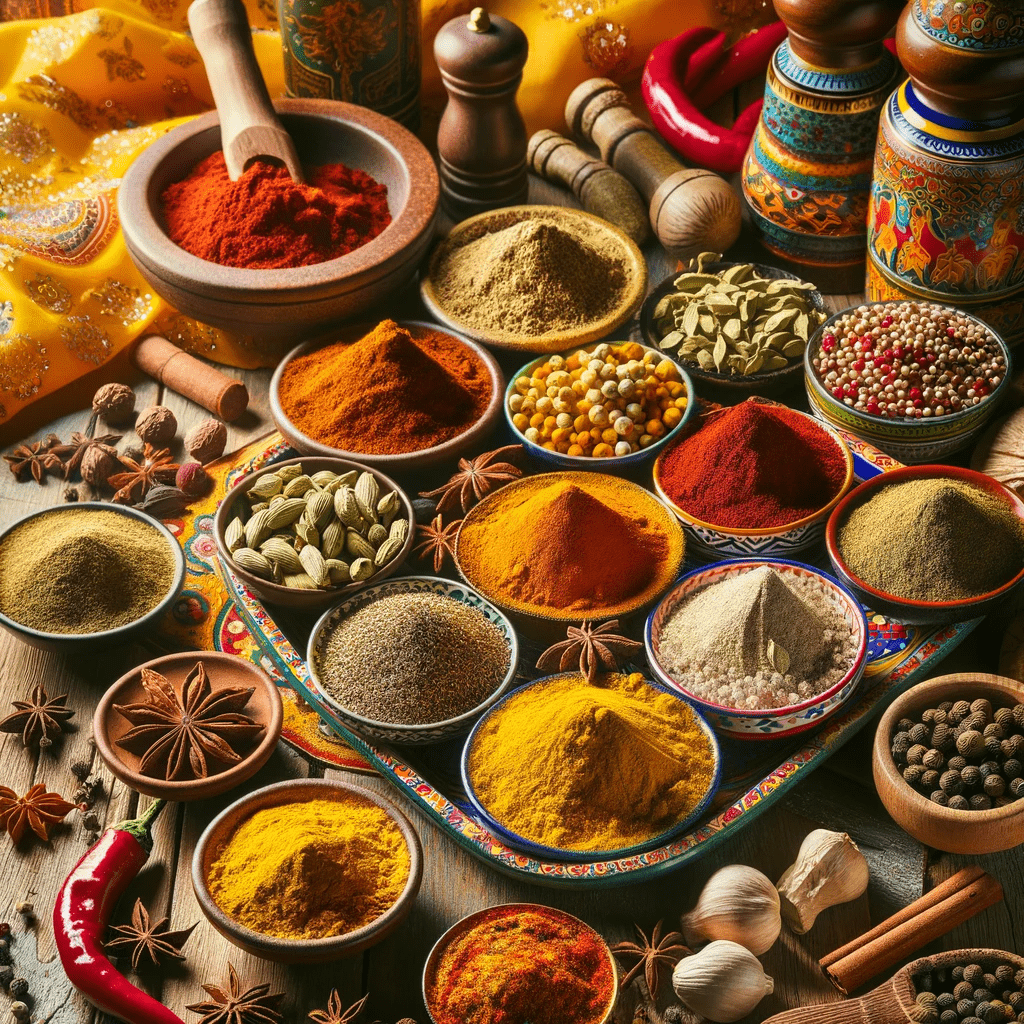Pakistani cuisine is a celebration of rich, aromatic flavors, deeply rooted in a diverse history of culinary traditions. Central to its distinctive taste is the artful use of a variety of traditional spices, each contributing its unique essence. This guide delves into the world of Pakistani spices, exploring the key ingredients that define this vibrant cuisine. Understanding these spices is not just about adding flavor to a dish; it’s about embracing the culture and traditions that these spices represent, allowing anyone to bring the authentic taste of Pakistan into their own kitchen.
Cumin (Zeera)
Cumin, or ‘Zeera,’ is a fundamental spice in Pakistani cooking, characterized by its warm and earthy flavor. It’s used extensively across various dishes, from curries to rice and lentil preparations. For the most aromatic experience, cumin seeds are roasted and then ground, which releases their oils and intensifies their flavor. This spice is a cornerstone in creating the deep, savory notes that are characteristic of many Pakistani dishes.
Coriander (Dhania)
Coriander seeds, known as ‘Dhania,’ are valued for their lemony, slightly sweet flavor. When ground, coriander becomes milder and is an excellent complement to other spices in a blend. It’s a versatile spice, used in meat marinades, vegetable dishes, and in combination with cumin, forms a balanced base for numerous Pakistani recipes. It adds a subtle freshness and complexity to the dishes it’s used in.
Turmeric (Haldi)
Turmeric, or ‘Haldi,’ is renowned for its vibrant yellow color and earthy, slightly bitter flavor. A staple in Pakistani cooking, it’s used in moderation to add color and a subtle depth of flavor to curries and rice dishes. Beyond its culinary use, turmeric is also valued for its health-promoting properties, making it a staple ingredient in both the kitchen and traditional medicine.
Garam Masala
Garam Masala is a quintessential blend of ground spices including cloves, cinnamon, cardamom, and nutmeg. Each blend can vary, offering a unique combination of warmth and complexity. It’s typically added towards the end of cooking to preserve its aroma and enhance the overall flavor of dishes like biryanis and kebabs. Garam Masala is a key component in bringing the signature warmth to Pakistani cuisine.
Red Chili Powder (Lal Mirch)
Red chili powder, or ‘Lal Mirch,’ is crucial for adding heat and a vibrant color to Pakistani dishes. The intensity of the chili can vary, so it can be adjusted according to personal heat preferences. It’s a staple in curries and meat dishes and can be used in spice rubs and marinades to add a fiery depth of flavor.
Cardamom (Elaichi)
Cardamom, known as ‘Elaichi,’ comes in two varieties: the aromatic and sweet green cardamom and the smoky, robust black cardamom. It’s used across a spectrum of dishes, from savory biryanis to sweet desserts. The whole pods can flavor rice dishes, while ground cardamom is often used in Pakistani sweets, imparting a unique, aromatic sweetness.
Cloves (Laung)
Cloves, or ‘Laung,’ are known for their intense, sweet, and pungent flavor. They are used sparingly in Pakistani cuisine, as their strong flavor can easily dominate. Cloves are ideal for slow-cooked stews and rice pilafs, where they contribute depth and complexity to the flavor profile of the dish.
Fenugreek (Methi)
Fenugreek, or ‘Methi,’ is available in various forms – seeds, dried leaves, and ground. It has a distinctive, slightly bitter flavor with a hint of maple. The leaves are commonly used in vegetable dishes and flatbreads, while the seeds are often included in spice mixes, lending a unique flavor to Pakistani dishes.
Saffron (Zafran)
Saffron, known as ‘Zafran,’ is highly valued for its fragrance and the golden color it imparts. It’s a luxurious spice used sparingly in special dishes such as biryani and in desserts like kheer. For maximum flavor and color, saffron strands are soaked in warm milk or water before being added to dishes.
Mustard Seeds (Rai)
Mustard seeds, or ‘Rai,’ add a pungent, nutty flavor to Pakistani dishes. They are commonly used in ‘tadka’ or tempering, a technique where spices are briefly fried in oil to release their flavors before being added to a dish. Mustard seeds are integral in adding a burst of flavor and aroma, particularly in Pakistani vegetable and lentil dishes.
Asafoetida (Hing)
Asafoetida, or ‘Hing,’ is a unique spice known for its strong, pungent smell that transforms when cooked. It’s used in minute quantities and is particularly popular in lentil dishes and vegetarian cooking, where it adds depth and a subtle, onion-like flavor.
Bay Leaves (Tez Patta)
Bay leaves, or ‘Tez Patta,’ add a subtle, herbal aroma to Pakistani dishes. They are commonly used in rice preparations and stews, imparting a mild flavor that complements other spices. The bay leaf is typically removed before serving, as it’s used more for its aroma than for direct consumption.
Tips for Using Pakistani Spices
- Roasting: Dry roasting spices before grinding them can intensify their flavors.
- Storage: Store spices in a cool, dark place in airtight containers to preserve their aroma.
- Blending Spices: Experiment with making your own spice blends for a personalized touch.
In Summary
The rich and diverse palette of Pakistani cuisine is largely defined by its use of traditional spices. Each spice contributes its unique character, bringing depth and complexity to the dishes. Whether you’re experimenting with Pakistani cooking for the first time or looking to refine your use of these spices, this guide provides a foundation for exploring the aromatic world of Pakistani flavors. Embracing these spices in your cooking not only enhances the taste but also connects you with the rich cultural heritage of Pakistan.









